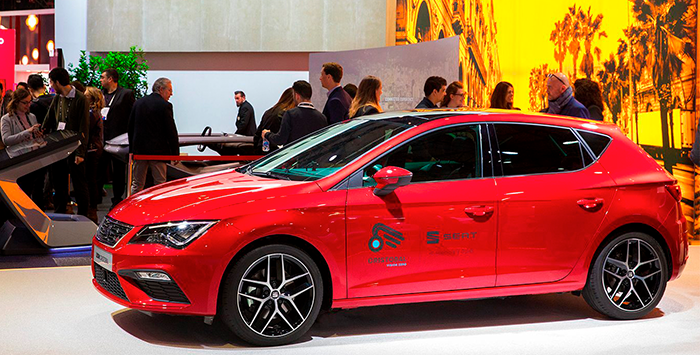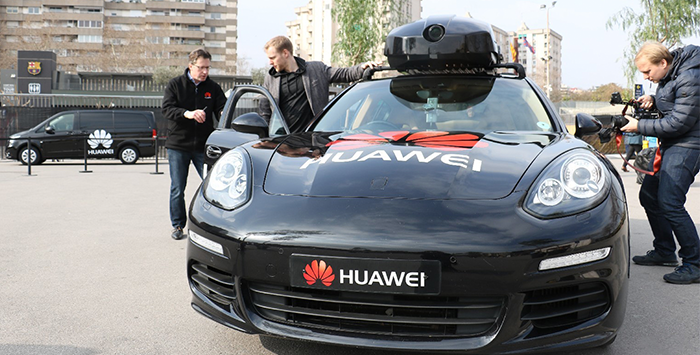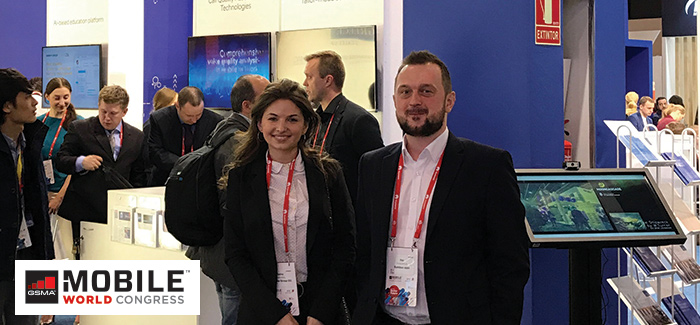MWC 2018 came to an end last week wrapping up a whirlwind of brand new products, disruptive innovations, and insightful keynote presentations.
The ‘hot’ label at the MWC has variously switched in different years from mobile apps and gadgets to niche categories such as the Internet of Things, but this year automobiles stole the show. Bamboo Apps’ team members walked hundreds of miles, visited dozens of stands to meet top influencers and soak up the latest trends in the automotive industry. Let us share with you what we learned.

Mercedes-Benz: MBUX and Natural Language
This year, Mercedes-Benz had one of the most interesting announcements at the show with its new MBUX smart multimedia system and in-car voice-activated assistant. Mercedes-Benz User Experience (MBUX) is a completely new AI-based infotainment platform. A video image of the surroundings taken with the front camera is augmented with helpful navigation information: street name, house number and so on, and directional arrows can automatically be blended onto the touchscreen.
Furthermore, the automaker is working with natural-language powerhouse Nuance. With this system onboard there’s no longer the need to press a button to enable voice controls. A simple word “Mercedes” will get the car to listen to a driver and launch a wide range of features, including navigation, adjusting the climate controls, heating and moving your seat, media selection and more.

BMW: CoPilot and Digital Key
The flashiest of the demos the company exhibited at MWC 2018 was an autonomous BMW i3 electric car with CoPilot Driver Assistance. The highly controlled demo of BMW i3 demonstrates Level 5 of driving automation: the car can be summoned by phone. The driver can take a seat in the back, plug in his destination and leave the rest up to the vehicle itself.
Another handy digital service was introduced to further facilitate seamless connectivity. The BMW Digital Key will make it possible to lock/unlock a BMW and start it up using a smartphone. What’s more, up to five digital copies of the key can be shared with other users.

Toyota: SmartDeviceLink
Toyota exhibited a next-generation app-interface software SmartDeviceLink (SDL) which connects in-vehicle infotainment system to smartphone applications. Vehicles that are equipped with SmartDeviceLink technology allow drivers to manage smartphone apps using display screens, buttons and/or voice recognition commands. Several popular apps like Spotify, iHeartRadio, AccuWeather and Domino’s are already available for drivers and passengers.

SEAT: ‘Safety-conscious’ car and Integration with Shazam
The Spanish brand took advantage of the world’s largest technological showcase to present its SEAT Leon Cristobal concept car, the ‘guardian angel’ of drivers. This prototype, which aims to achieve zero road accidents, is equipped with more than 15 safety assistants, whose functions can contribute to reducing the main causes of traffic accidents by up to 40%, including distractions, drowsiness, excess speed or alcohol consumption.
Also, SEAT became the first world’s brand to integrate Shazam into its cars. The automaker partners with the popular music-discovery app to safely allow users to identify music through SEAT DriveApp.

Continental: Predictive Connectivity Manager and vAnalytics
At MWC 2018, Continental unveiled the Predictive Connectivity Manager, a solution that determines ‘driver’s most probable path’ through continuous analysis of the vehicle’s pre-calculated route and the data of other vehicles traveling the same route.
The company also presented vAnalytics, a cloud-based service platform that gathers data from various sources, analyzes it, and creates services to solve pain points.

SAP: SAP Vehicles Network
SAP showcased its connected car, featuring a FIAT 124 Spider Abarth roadster that combines technology and data from the SAP Vehicles Network solution. The solution creates an intelligent, automated experience — from car rental and parking to integrated navigation and expense management for business travelers. SAP Vehicles Network makes any car smart and transactional by providing drivers with access to cashless services, like fueling and in-trip food ordering and delivery.

Huawei & Porsche: Smartphone-driven Car Demo
Huawei and Porsche have joined forces and introduced a Smartphone-driven Car Demo. Huawei Mate 10 Pro smartphone mounted on the dashboard of a Porsche Panamera — and hooked up to a skybox on the roof with a camera and a connection to the drivetrain — turned the car into a driverless vehicle capable of detecting and maneuvering around certain objects. The unique driving experience is achieved with Kirin 970 processor which has dedicated “neural processing unit” or NPU designed specifically for AI-related tasks. NPU is able to interpret image data, match it to known objects, and train itself to identify objects that aren’t already in its recognition model.
At MWC 2018, we saw that tremendous advances in technology are about to revolutionize the automotive industry. With the rise of IoT and artificial intelligence (AI), car manufacturers are trying to reimagine the automobile from giving drivers greater convenience to delivering a more relaxing, entirely driverless experience. For Bamboo Apps, 2018 will be the year of connected car and the Mobile World Congress is an excellent start of this very exciting year.


